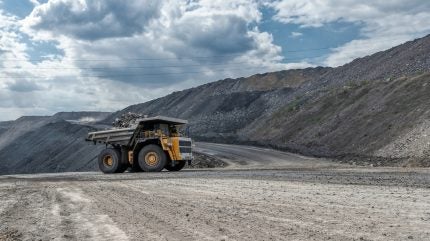Sign up for daily news updates from CleanTechnica on email. Or follow us on Google News!
DNV is an international accredited registrar and classification society headquartered in Høvik, Norway. It was created in 2012 by the merger of Norway’s Det Norske Veritas and Germany’s Germanischer Lloyd. The Norwegian company was founded in 1864 to head the technical inspection and evaluation of Norwegian merchant vessels. Its German counterpart was founded in Hamburg in 1867 by a group of 600 ship owners, shipbuilders, and insurers. Today, DNV employs 15,000 people in 350 offices operating in more than 100 countries. It provides services for several industries, including maritime, oil and gas, renewable energy, electrification, and healthcare.
This week, DNV has issued a new energy transition report that claims emissions of greenhouse gases will peak in 2024 and that global heating will reach 2.2º C by the end of this century. That last part is a bit curious, since some parts for the world are above 2º C already. If that is so, how hot will they be 75 years from now?
DNV On Peak Emissions
In a press release shared with CleanTechnica, DNV said 2024 will go down as the year of peak energy emissions according to its Energy Transition Outlook. Energy-related emissions are at the cusp of a prolonged period of decline for the first time since the industrial revolution. Emissions are set to almost halve by 2050, but this is a long way short of requirements of the Paris Agreement. The Outlook forecasts the planet will warm by 2.2 °C by end of the century.
The peaking of emissions is largely due to plunging costs of solar and batteries, which are accelerating the exit of coal from the energy mix and stunting the growth of oil. Annual solar installations increased 80% last year as it beat coal on cost in many regions. Cheaper batteries, which dropped 14% in cost last year, are also making the 24-hour delivery of solar power and electric vehicles more affordable. The uptake of oil was limited as electrical vehicles sales grew by 50%. In China, where both of these trends were especially pronounced, peak gasoline is now in the past.
China is dominating much of the global action on decarbonization, particularly in the production and export of clean technology. It accounted for 58% of global solar installations and 63% of new electrical vehicle purchases last year. While it remains the world’s largest consumer of coal and emitter of carbon dioxide, its dependence on fossil fuels is set to fall rapidly as it continues to install solar and wind. China is the dominating exporter of green technologies although international tariffs are making their goods more expensive in some territories.
“Solar PV and batteries are driving the energy transition, growing even faster than we previously forecasted.” said Remi Eriksen, CEO of DNV. “Emissions peaking is a milestone for humanity. But we must now focus on how quickly emissions decline and use the available tools to accelerate the energy transition. Worryingly, our forecasted decline is very far from the trajectory required to meet the Paris Agreement targets. In particular, the hard-to-electrify sectors need a renewed policy push.”
The success of solar and batteries is not replicated in the hard-to-abate sectors, where essential technologies are scaling slowly. DNV has revised the long term forecast for hydrogen and its derivatives down by 20% (from 5% to 4% of final energy demand in 2050) since last year. And although DNV has revised up its carbon capture and storage forecast, only 2% of global emissions will be captured by CCS in 2040 and 6% in 2050. A global carbon price would accelerate the uptake of these technologies, it says. Wind remains an important driver of the energy transition, contributing to 28% of electricity generation by 2050. In the same time frame, offshore wind will experience 12% annual growth rate although the current headwinds impacting the industry are weighing on growth.
Despite these challenges, the peaking of emissions is a sign that the energy transition is progressing. The energy mix is moving from a roughly 80/20 mix in favor of fossil fuels today, to one which is split equally between fossil and non-fossil fuels by 2050. In the same time frame, electricity use will double. “There is a growing mismatch between short term geopolitical and economic priorities versus the need to accelerate the energy transition. There is a compelling green dividend on offer which should give policymakers the courage to not only double down on renewable technologies, but to tackle the expensive and difficult hard-to-electrify sectors with firm resolve,” added Eriksen.
The Outlook also examines the impact of artificial intelligence on the energy transition. AI will have a profound impact on many aspects of the energy system, particularly for the transmission and distribution of power. Although data points are currently sparse, DNV does not forecast that the energy footprint of AI will alter the overall direction of the transition. It will account for 2% of electricity demand by 2050.
DNV Banks On Improved Efficiency
A lot has been written lately about how AI and data centers will gobble up more and more of the available electrical supply in the near future. Microsoft thinks it needs the output of an entire nuclear generating station to supply just a portion of its power needs. Yet the DNV report says final energy demand will only grow by 10% — from 455 EJ to 502 EJ — between now and 2050. That might seem like an odd result for a world where the population increases by 20% between now and 2050 and global GDP almost doubles to $320 trillion at the same time. Indeed, the total energy services needed globally — measured in goods produced, kilometers transported, and square meters heated — will grow about 80% across the globe.
The DNV report explains that the transition it is forecasting involves massive efficiency gains, mainly linked to electrification, that will almost entirely offset demand for energy associated with the population and economic growth. Final energy demand — the energy delivered to the door of a house or factory — grows more slowly than demand for energy services and in some regions will shrink in absolute terms.
DNV also predicts electric vehicles will be half of all new vehicle sales by 2031 and will account for 62% of the passenger vehicles and 35% of the commercial vehicles on the road in 2050. The road transport sector will see the strongest shift to electricity and therefore also the strongest efficiency gains. The group expects road energy demand to reduce from 94 EJ in 2023 to 70 EJ by mid-century. Primary energy supply is expected to peak in 2038 at 673 EJ/yr, just 6% above current levels, and drop by around 3% to 654 EJ by 2050. This minimal growth is due to reduced conversion losses, such as heat lost in coal-fired power plants, as non-fossil energy use rises.
Coal peaked in 2014, and after a relatively flat development, it will have a new peak now in 2024 marginally lower than 2014. From 2025 onward, DNV expects a downward trend due to structural changes such as the permanent replacement of coal by renewables in electricity generation in China. Coal use is set to fall by almost 70% to 2.7 gigatons by mid century. That’s a big drop, but not fast enough in terms of meeting international climate goals, it says.
DNV says it expects oil to start to decline around 2027. Peak oil will be hard to spot because it will be more like a small bump on a plateau. From its level of 189 EJ in 2023, it forecasts annual oil use to end 7 EJ lower in 2030. More important is how fast and how far oil will fall during the forecast period. From peak annual oil use, DNV expects annual oil use to fall almost 40% to 121 EJ in 2050. Overall oil use in transport will halve during the forecast period. As the electrification of road transport accelerates, the decline of oil between 2035 and 2050 is almost twice that seen between 2025 and 2035. From peak annual oil use, DNV expects annual oil use to fall almost 40%, ending at 121 EJ in 2050.
Between now and 2027, DNV expects there will be a modest increase in the use of methane and then a plateau for three to four years before a very gentle decline to a level 3% lower than present use in 2050. Rather than peak gas, the focus should be on its staying power. It is roughly one quarter of the mix now and will still be around 22% of the mix in 2050. Gas use generally increases in low and middle income regions, and there will be demand for gas in new sectors like maritime transport and as a feed stock for blue hydrogen and ammonia.
The Takeaway
The DNV report is a little good news mixed with a healthy dollop of not so good news. We aren’t doing enough fast enough to address the reasons why our planet is overheating. The general attitude is it is someone else’s problem to solve. That sort of think will lead straight to a climate Apocalypse. Oddly, China, which is considered a rogue state by many Western countries, is moving aggressively to renewable energy. While the rest of the world is hitting China with brickbats for powering much of its economy with coal, the signs are that it will soon be first among all nations at taming its emissions. Everyone else is only giving lip service to the idea. It’s likely things are not going to end well, despite the best efforts of organizations like DNV.

Have a tip for CleanTechnica? Want to advertise? Want to suggest a guest for our CleanTech Talk podcast? Contact us here.
Latest CleanTechnica.TV Videos
CleanTechnica uses affiliate links. See our policy here.
CleanTechnica’s Comment Policy




